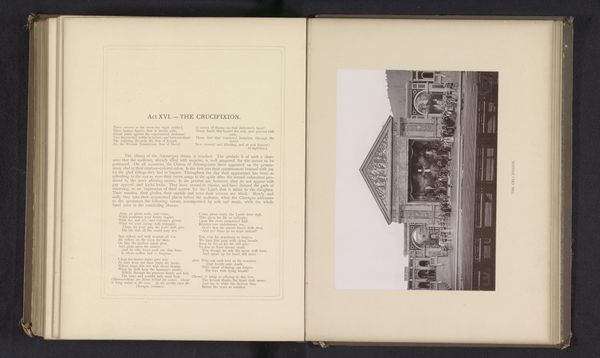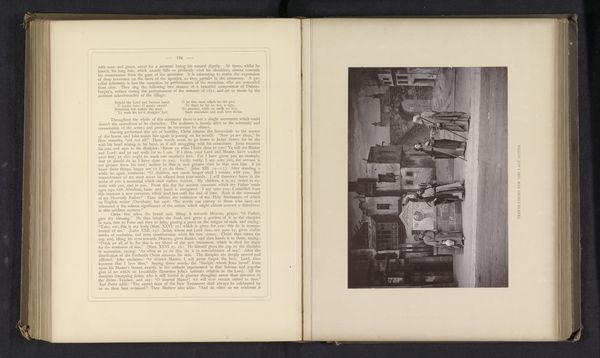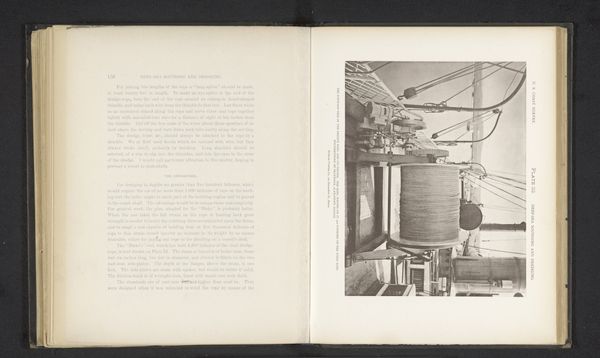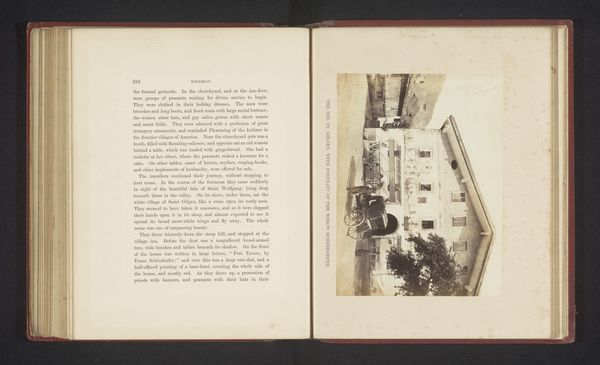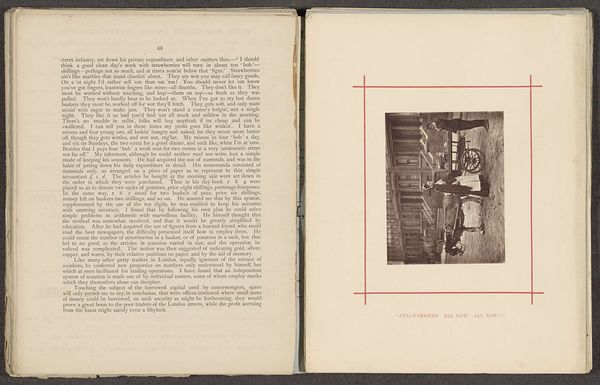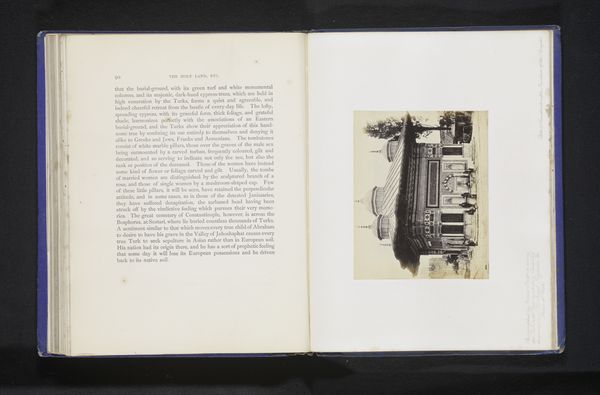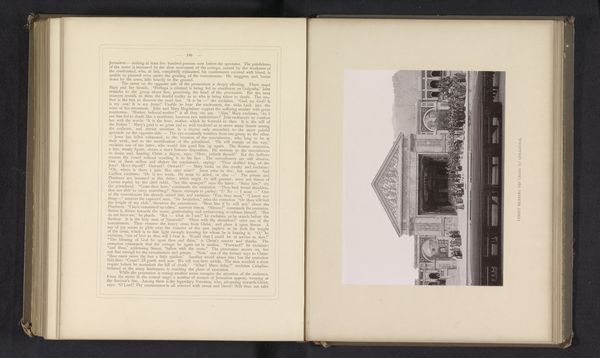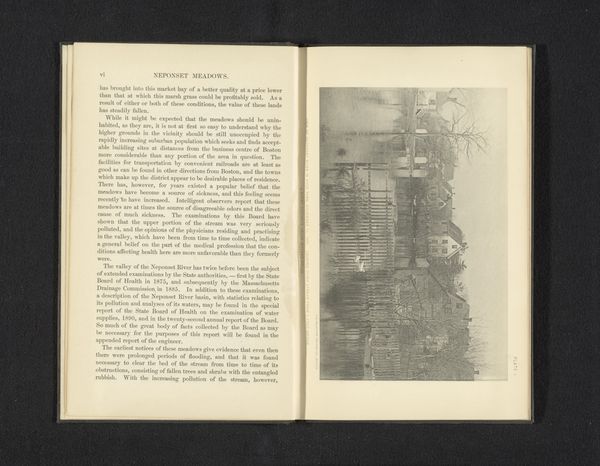
#
aged paper
#
homemade paper
#
script typography
#
paperlike
#
hand drawn type
#
hand-drawn typeface
#
thick font
#
delicate typography
#
thin font
#
historical font
Dimensions: height 97 mm, width 142 mm
Copyright: Rijks Museum: Open Domain
Curator: This is "Samson destroys the Philistines," created before 1890 by Carl Stockmann. The imagery appears printed on paper, as part of what looks like an aged book. Editor: My first impression is one of explosive energy, frozen in time. The density of figures and architecture suggests a scene overflowing with conflict. Curator: Indeed. Consider the labor and social hierarchies at play. The paper itself suggests limited resources or a homemade quality, hinting at the economic conditions surrounding the production of this print. Editor: Right. We should examine how this representation reinforces or challenges dominant narratives of power, resistance, and retribution through depictions of Samson, the Philistines and the materials and production. Curator: Absolutely. The biblical narrative, understood through the lens of colonialism and patriarchy, informs the composition as well as the meaning. The thick and thin fonts interplay like tension within the depicted battle scene. What readings could we extract through intersectional feminist and postcolonial theories? Editor: Perhaps consider the paper, likely cheap stock or maybe handmade in a world far away from our fine art institutions. What did the artist do and who purchased them or kept them stored away like this until its current resurfacing? The process speaks of resourcefulness, of a potential desire to bypass established channels. Curator: Thinking of Samson himself as a historical and politicized figure, not just a mythical strongman, changes our understanding. How do the means of this image production reinforce our readings of power and resistance. Editor: Precisely, examining how it reflects or rejects dominant ideologies of the time can reveal more about both its context and the act of production, it’s own destruction or resistance! Curator: This dialogue, while focused on material, draws awareness towards power dynamics depicted within. A useful approach to thinking of intersectionality in art practices and art interpretations. Editor: Yes! By combining socio-political investigation with art object information, it makes viewing even more relevant now.
Comments
No comments
Be the first to comment and join the conversation on the ultimate creative platform.
